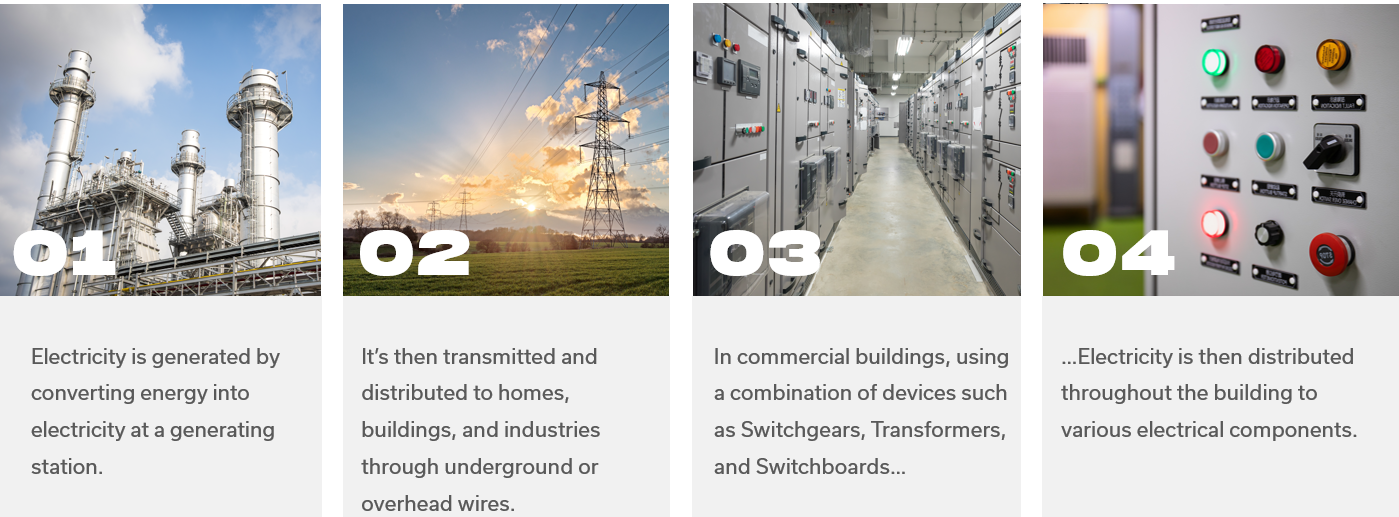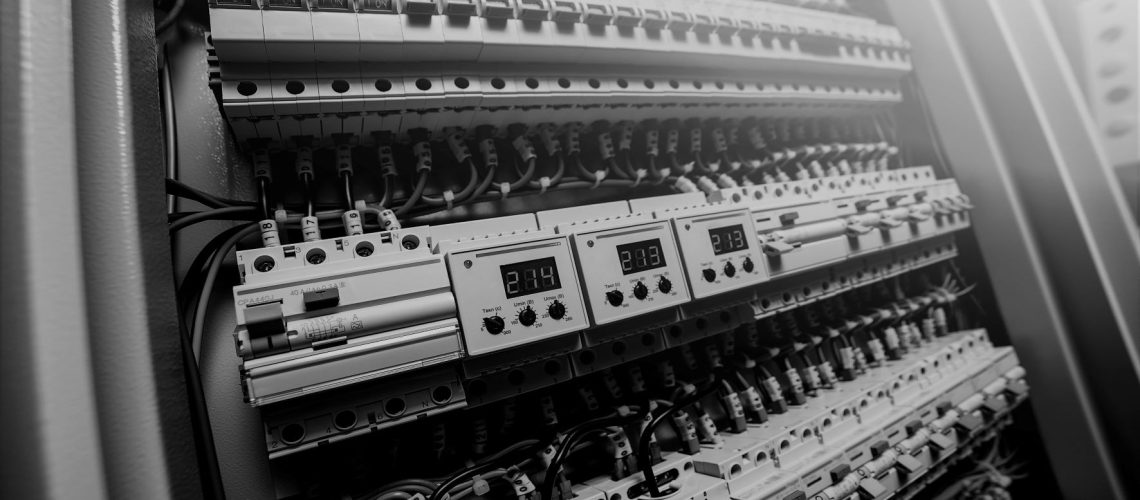Energy generation

As we know, raw materials and natural resources, both finite and renewable, are processed into energy production systems to generate energy. This is done via a series of steam-powered turbines, rotors, and coils, responsible for converting mechanical energy into electricity.
That energy is then amplified using a device called “Transformers”— they act as a “supercharger” to incoming electricity. This surge is then transferred from the transformer to “the grid system,” which is a series of transmission wires responsible for transporting electricity at high voltage.
As electricity moves through the grid via a series of overhead (or underground) wires, it eventually passes through a substation which is responsible for reducing the power down to a more appropriate voltage level. The amount of electricity needed is determined by nearby building requirements.
After passing through other step-down transformers, responsible for bringing the electricity down to an acceptable level AND ensuring maximum safety, it finally reaches the destination: the building that needs power! These components include everything from Switchgears, Transformers, and Switchboards, TO Automatic Transfer Switches, Disconnects, Power Panels, Receptacles, Switches, and more.
What is Electricity?
Electricity is the movement of electrons. Electrons create change, which we can harness to do work. Your lightbulb, your stereo, your phone, etc., are all harnessing the movement of the electron in order to do work.

- Voltage is the pressure from an electrical circuit’s power source that pushes charged electrons (current) through a conducting loop, enabling them to do work such as illuminating light.
- Current is the rate at which electrons flow past a point in a complete electrical circuit. It expresses the number of electrons ( also known as ”electrical charge”) flowing past a point in a circuit over a given time.
- Resistance is the measurement of the opposition to current flow within an electrical circuit. Essentially all materials resist current; a conductor offers less resistance, where an insulator offers more.
- OHM’S Law: With these three basic principles in mind, it provides a great understanding of the transportation of electrons, or in this case, electricity. It is used to determine how the electrical system within a building is designed to meet desired requirements. The combination of these three principles is the building block for Ohm’s Law theory. In essence, Ohm’s law is a formula named by German Physicist Georg Ohm (1789-1854). It is used to calculate the relationship between the three basic principles within a circuit. In Electrical Engineering, this is important because if at least two of the three values are known, technicians can utilize the triangle to calculate the third.
